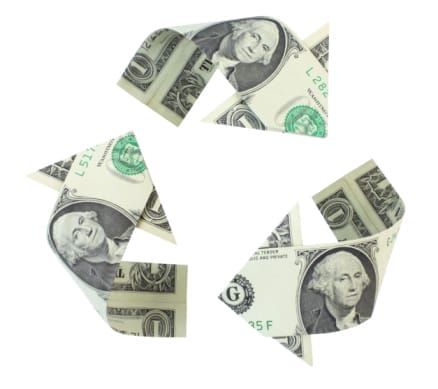In the wake of the vigorous debate about the status of green marketing (and responses like this one and this one), it’s important to remember the powerful message corporations’ logos convey. For example, several years ago, a friend pointed out the subliminal arrow embedded in FedEx’s corporate logo.
Admittedly it took me a couple days to really see it. After all, I was trying to turn the tide of long-term memory—I’ve seen countless FedEx trucks over the years. Only after staring at a FedEx truck for what seemed like an eternity (likely no more than 20 seconds), I finally noticed the arrow. Years later I can’t help but notice the arrow every time I spot a FedEx truck. What is the arrow’s significance? It communicates what the company is about—moving products, and aspirations, forward.
 To grasp the power of FedEx’s logo, consider the following logo, used by Sherwin-Williams, best known for its success as a global paint manufacturer. What does this logo convey?
To grasp the power of FedEx’s logo, consider the following logo, used by Sherwin-Williams, best known for its success as a global paint manufacturer. What does this logo convey?
The company’s logo clearly conveys the image of a paint company with global reach. The paint being spilled all over the Earth (with the comment ‘Cover the Earth’) also suggests that Sherwin-Williams has limited concern about its product’s environmental impact. Sherwin-Williams’s logo isn’t aligned with its measured concern for the environment (as witnessed by its environmental sustainability initiative, calledEcoVision). So it’s only natural to wonder why the company continues to employ this logo. Though the company deserves credit for avoiding the easy way out—changing the color of its paint from red to green.
While companies large and small hone their sustainability marketing messages, they should not lose sight of the power of their corporate logo to communicate their values and value creation advantages. Alignment between messages and images is an essential -but easy to overlook – component of a successful sustainability strategy.


























